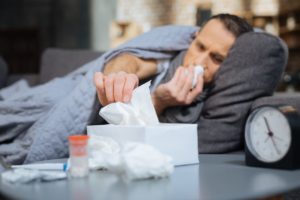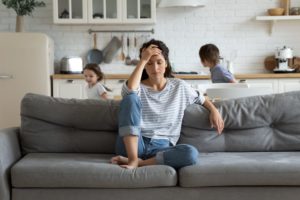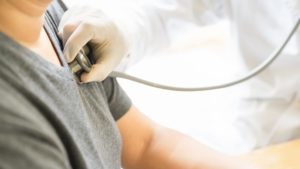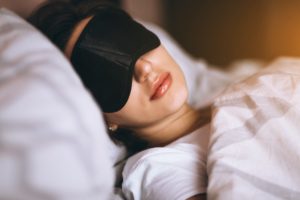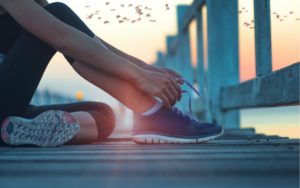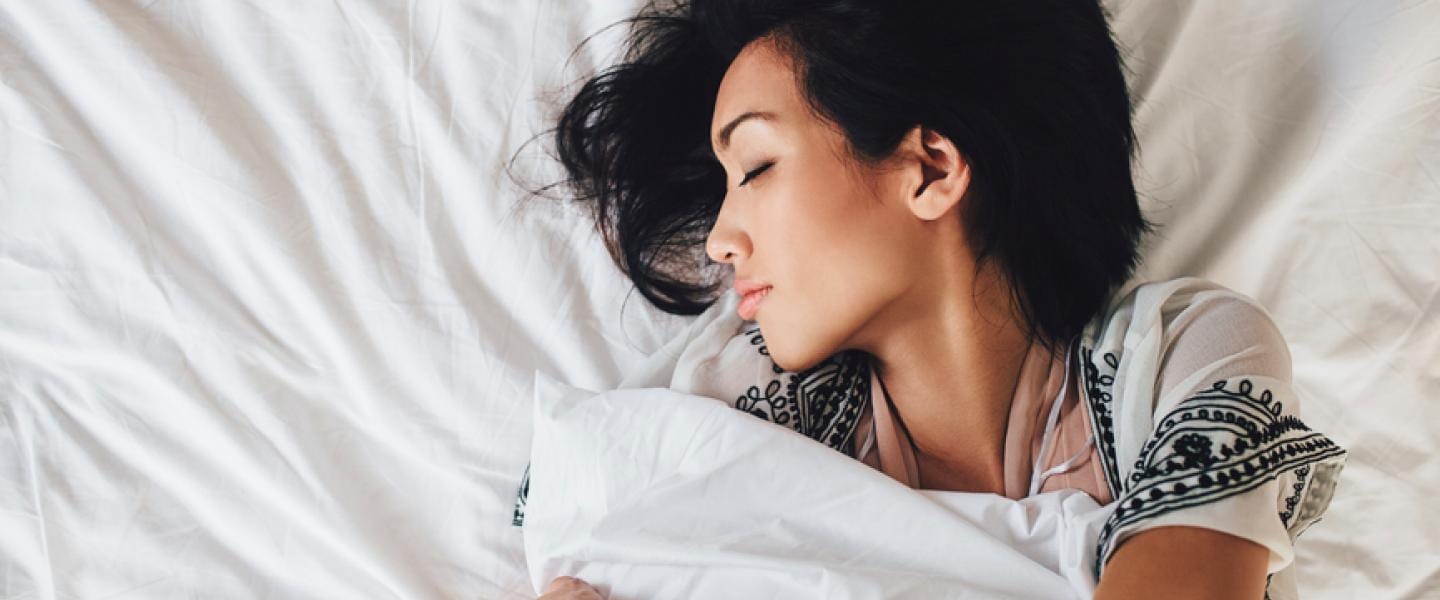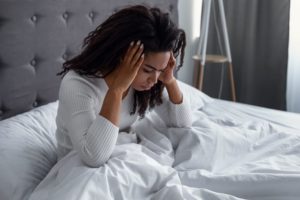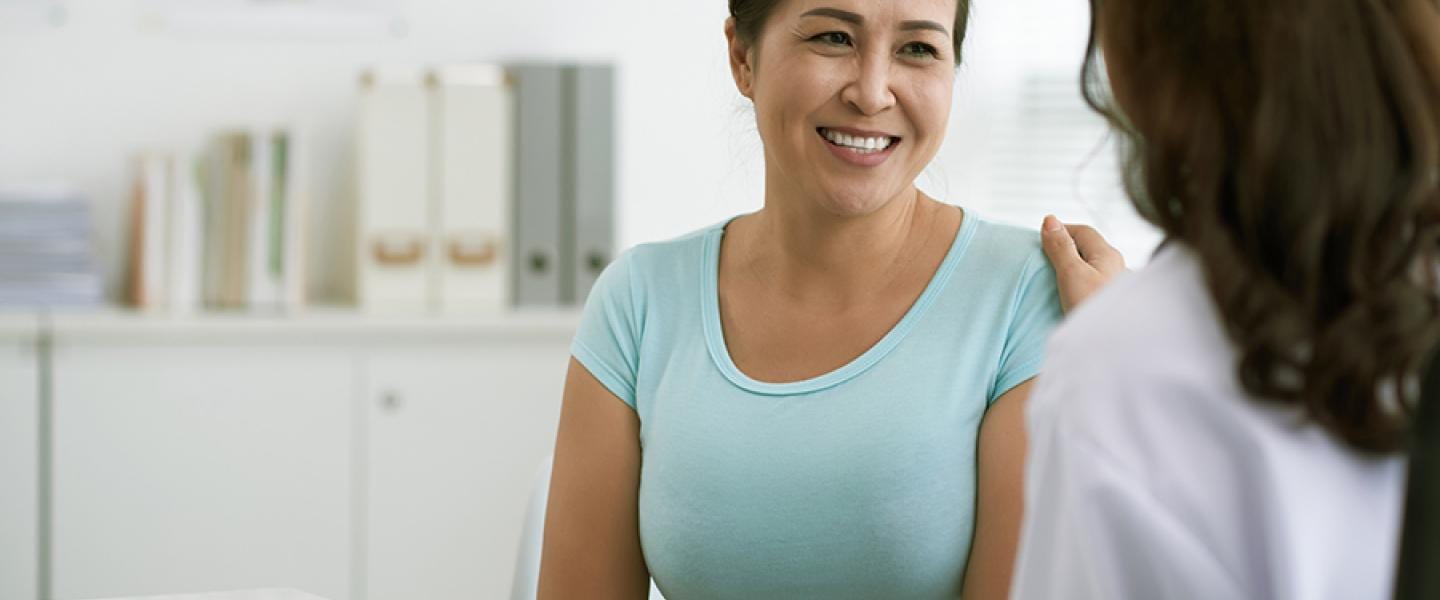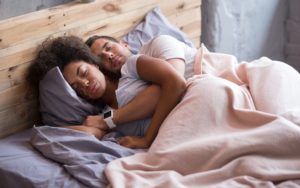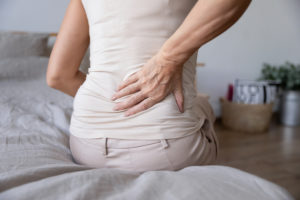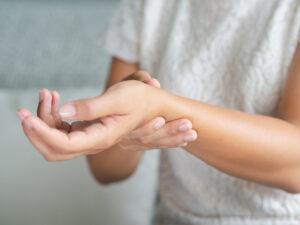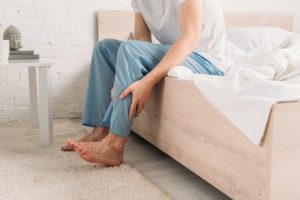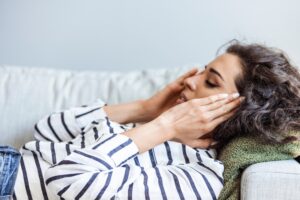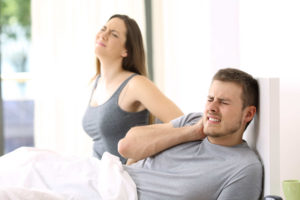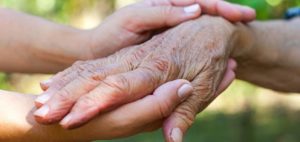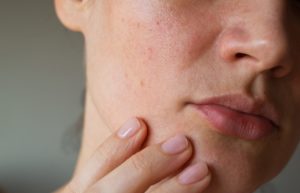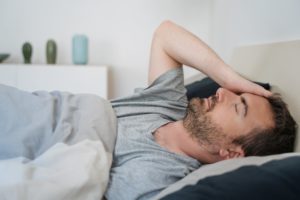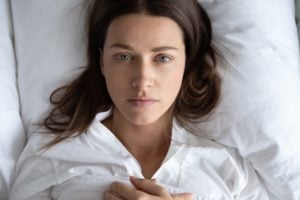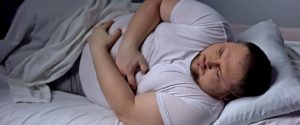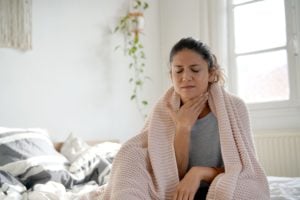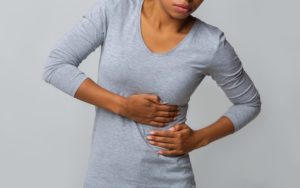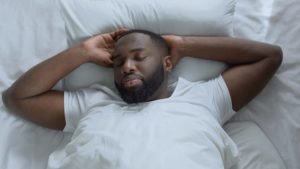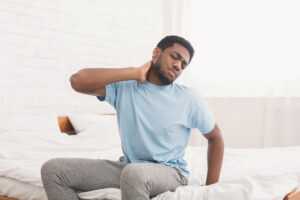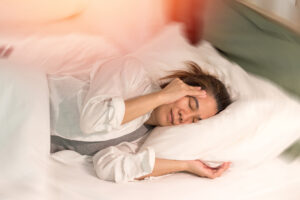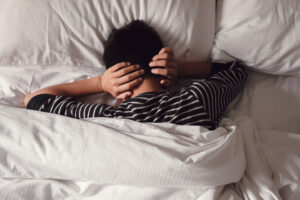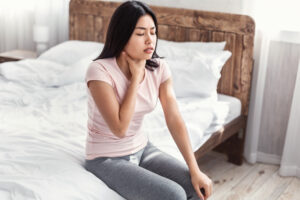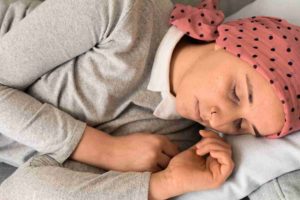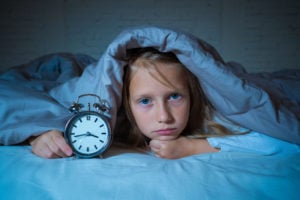Waking Up with Back Pain: Causes and Tips for Relief
- Lower back pain after sleeping may be caused by a medical condition, your sleeping position, or an old mattress.
- Relieve morning back pain by stretching before getting out of bed and moving slowly when getting up.
- If your lower back pain continues, talk to your doctor or invest in a new mattress suited to your needs.
Lower back pain is the most common type of musculoskeletal pain experienced by adults, with 84% of people experiencing it at least some point in their lives, and 23% experiencing it on a chronic basis.
Some mild back pain in the morning is not unusual. In many cases, you can chalk it up to the normal stiffness you feel after staying in one position for several hours. But, if you are still feeling pain after you have gotten out of bed and started to move around, there may be something specific causing your back pain. It could be an underlying medical condition, an inadequate mattress, or even your sleep position.
Is Your Troubled Sleep a Health Risk?
A variety of issues can cause problems sleeping. Answer three questions to understand if it’s a concern you should worry about.
Why Does My Back Hurt When I Wake Up?
There are a number of potential causes for lower back pain in the morning. Here are some of the most common.
Unsupportive Sleep Position
If you feel lower back pain every morning after sleeping, your sleep position could be at fault. Sleeping in an unsupportive position can increase pressure on your spine and lead to back pain.
When you sleep on your stomach, you are more likely to twist your neck out of alignment with the rest of your spine. Depending on the firmness of your mattress, your lower abdomen may also sink more deeply than the rest of your spine, uncomfortably stretching your back out of alignment. Either way, this sleep position could put you at a higher risk of lower back pain upon waking up. To prevent this misalignment, it may help to try sleeping on your stomach without a head pillow, and by placing a thin pillow beneath your lower abdomen.
Back sleeping makes it easier to keep your spine straight, but can still lead to back pain if you do not support your spine’s natural curvature. One study found this sleep position actually doubles your risk of lower back pain. To lower your risk and prevent discomfort, consider placing a pillow beneath your knees.
People who sleep on their side report fewer back pain symptoms, but it is still possible to press your spine out of alignment. You can prevent this by choosing a head pillow with a loft that matches the distance between your neck and your shoulder, and sleeping with a pillow between your knees to even out your hips.

Bad Mattress
Your sleep position can only do so much to relieve lower back pain in the morning if you are sleeping on an old, unsupportive mattress. If you have had your mattress for more than five years, it may be time to consider replacing it.
In one study, participants replaced their old mattresses , which averaged 9.5 years old, with new ones. Over the following month, their sleep quality measurably improved each week, as did their back pain.
Even if your mattress is relatively new, it may just not be a good fit for you or your sleep position. It could be too firm or too soft to provide adequate support. In general, medium firm mattresses tend to reduce lower back pain more effectively than firm mattresses do.
Pregnancy
Back pain is common during pregnancy. While it typically begins between the second and third trimesters , it can start as early as during the first four weeks. For some that are pregnant, their back pain worsens during sleep and can cause them to wake up. However, this type of back pain tends to resolve after birth.
During the pregnancy, placing a warm compress on the back can provide relief for lower back pain, as can regular stretching. When getting into and out of bed, using your leg strength instead of your back muscles to help you stand up can help prevent straining your lower back.
Sleeping on the left side with the knees bent is also recommended during pregnancy, to relieve discomfort and support fetal health. You can support your spine during sleep by placing pillows under your abdomen, between your legs, and against the small of your back.
Degenerative Disc Disease
More than 90% of adults over 60 have a degenerated disc. Degenerative disc disease can develop naturally with age, as the spinal discs between the vertebrae decrease in height.
For some people, this process can happen with minimal or no pain. For others, the pain can be intense and feel worse in the morning . Being overweight or obese can exacerbate disc degeneration and any associated lower back pain.
Treatment for degenerative disc disease may include pain medications, steroid injections, ice or heat therapy, physical therapy, acupuncture, and wearing a back brace.
Fibromyalgia
Fibromyalgia affects up to 5% of people, with women being more at risk than men. The condition causes muscle pain, tension, and spasms throughout the body, including the back. Symptoms also include sleep problems, depression, and anxiety.
Although there is no cure for fibromyalgia, doctors may prescribe muscle relaxers and pain relievers to relieve symptoms. Therapies like massage, acupuncture, and physical therapy may also be recommended.
Other Causes of Lower Back Pain in the Morning
A number of other factors may contribute to lower back pain upon waking up. Lower back pain can be caused by other medical conditions and lifestyle factors such as:
- Arthritis
- Endometriosis
- Kidney stones
- Mental health conditions like anxiety and depression
- Occupations that require heavy lifting, pushing, or pulling
- Old age
- Osteoporosis
- Physical injury
- Poor fitness
- Smoking
- Spinal cord problems like sciatica, spinal stenosis, or herniated disc
- Stress
- Tumors
- Weight gain
Tips and Treatment for Morning Back Pain Relief
It is possible to sleep better with low back pain. You may want to consider making a few changes to your routine in order to relieve your lower back pain in the morning and start your day off more comfortably.
Change Up Your Sleep Position or Mattress
Switching to a more supportive sleep position can reduce lower back pain. Also consider how you can use pillows — or invest in a new mattress — to support better spinal alignment and relieve lower back pain.
Research suggests medium firm mattresses are the best mattresses for back pain. In one study of people with low back pain, those who slept on medium firm mattresses reported lower pain scores both during sleep and upon getting up in the morning.
“You want your spine to be aligned from head to tail, with gentle curves through your neck and low back, avoiding big bends and severe angles throughout the spine. The proper set up helps to reduce stress on your spine at night and can significantly reduce low back pain and improve your overall function.”
Dr. Jenny Iyo, Physical Therapist
Take It Slow When Getting Up
Taking it slow when you get out of bed can be beneficial. You may want to use your arms to sit up slowly before moving your legs off the side of the bed. Once you plant your feet on the ground, shoulder-width apart, you can stand up slowly, using your leg strength instead of your back to help you up.
After carefully standing, you can further relieve tension by reaching your arms up above your head and stretching slowly from side to side.
Do Morning Stretches
Research shows that yoga can help manage recurring lower back pain . Simple stretching exercises, even before you get out of bed, can relieve back pain.
For example, you can lie on your back and stretch your arms and hands above your head as far as you can, with your legs and feet stretching in the opposite direction. Hold for a few seconds before releasing.
It may also help to stretch out your lower back while still on the bed. To do this, you can bring your knees into your chest and hold, wrapping your arms around them. Then gently rock from side to side.
A few more stretches can further relieve tension in the lower back and help you prepare for the day.
Plank
A plank increases your core strength, creating a protective effect for your spine. With a stronger core, your body can use more of your abdominal muscles instead of your back, leading to less strain and injury throughout the day.
To do a plank, you will need to lie on the floor facedown, then push yourself up onto your toes and forearms. Make sure that your elbows are directly beneath your shoulders and in line with your wrists. Keep your neck in alignment with the rest of your spine, without letting your abdomen sink too far down or up. You can prevent straining your back by squeezing your abs, glutes, and thighs. For best results, hold this pose for 30 to 60 seconds.
Baby Cobra
When you are experiencing lower back pain, a baby cobra pose can help stretch your back and relieve tension. To try this pose, lie on your stomach on the floor, with your palms facing down underneath your shoulders, and your elbows and forearms close to the body. Slowly push yourself up using your arm strength, with your head facing forward and your neck straight. Hold for 10 to 15 seconds, then lower down.
Chair Pose
Chair pose is another yoga pose that might help. Stand up with your legs shoulder-width apart and your toes facing forward. Then, squat down like you are sitting into a chair. Keep your knees bent at a 90-degree angle, with the goal of keeping them over your heels instead of your toes. Hold for a few seconds, then stand back up.
Stay Active Throughout the Day
Daily exercise can help keep your body limber. It also improves your sleep quality . A simple form of exercise, like walking, can be beneficial for reducing pain and improving sleep quality.
If you sit for long periods of time at your work, make sure to stand up, stretch, and walk around every 30 minutes or so. If your desk chair is not supportive, place a pillow or rolled towel behind your back for lumbar support, and let your feet rest on a footstool.
Talk to Your Doctor
If your lower back pain is so severe that it interferes with your daily life, or if you start to notice other symptoms, talk to your doctor. They may recommend physical therapy in tandem with a pharmaceutical treatment plan, including nonsteroidal anti-inflammatory drugs (NSAIDs), acetaminophen, muscle relaxants, or topical creams and gels to relieve back pain. Always consult your doctor before taking any medications, since they know your medical history and can inform you of any potential side effects.
Lower back pain in the morning is a common experience. Many people find relief with a few lifestyle changes. If your pain persists, your doctor can recommend additional treatment options.

Still have questions? Ask our community!
Join our Sleep Care Community — a trusted hub of sleep health professionals, product specialists, and people just like you. Whether you need expert sleep advice for your insomnia or you’re searching for the perfect mattress, we’ve got you covered. Get personalized guidance from the experts who know sleep best.
References
11 Sources
-
Balagué, F., Mannion, A. F., Pellisé, F., & Cedraschi, C. (2012). Non-specific low back pain. Lancet (London, England), 379(9814), 482–491.
https://pubmed.ncbi.nlm.nih.gov/21982256/ -
Cary, D., Briffa, K., & McKenna, L. (2019). Identifying relationships between sleep posture and non-specific spinal symptoms in adults: A scoping review. BMJ Open, 9(6), e027633.
https://pubmed.ncbi.nlm.nih.gov/31256029/ -
Jacobson, B. H., Boolani, A., & Smith, D. B. (2009). Changes in back pain, sleep quality, and perceived stress after introduction of new bedding systems. Journal of Chiropractic Medicine, 8(1), 1–8.
https://pubmed.ncbi.nlm.nih.gov/19646380/ -
Sabino, J., & Grauer, J. N. (2008). Pregnancy and low back pain. Current Reviews in Musculoskeletal Medicine, 1(2), 137–141.
https://pubmed.ncbi.nlm.nih.gov/19468887/ -
A.D.A.M. Medical Encyclopedia. (2020, June 2). Problems sleeping during pregnancy. MedlinePlus.
https://medlineplus.gov/ency/patientinstructions/000559.htm -
Bailly, F., Maigne, J. Y., Genevay, S., Marty, M., Gandjbakhch, F., Rozenberg, S., & Foltz, V. (2014). Inflammatory pain pattern and pain with lumbar extension associated with Modic 1 changes on MRI: A prospective case-control study of 120 patients. European Spine Journal, 23(3), 493–497.
https://pubmed.ncbi.nlm.nih.gov/24221918/ -
Samartzis, D., Karppinen, J., Cheung, J. P., & Lotz, J. (2013). Disk degeneration and low back pain: Are they fat-related conditions? Global Spine Journal, 3(3), 133–144.
https://pubmed.ncbi.nlm.nih.gov/24436864/ -
A.D.A.M. Medical Encyclopedia. (2021, June 9). Fibromyalgia. MedlinePlus.
https://medlineplus.gov/ency/article/000427.htm -
Kovacs, F. M., Abraira, V., Peña, A., Martín-Rodríguez, J. G., Sánchez-Vera, M., Ferrer, E., Ruano, D., Guillén, P., Gestoso, M., Muriel, A., Zamora, J., Gil del Real, M. T., & Mufraggi, N. (2003). Effect of firmness of mattress on chronic non-specific low-back pain: randomised, double-blind, controlled, multicentre trial. Lancet (London, England), 362(9396), 1599–1604.
https://pubmed.ncbi.nlm.nih.gov/14630439/ -
Tilbrook, H. E., Cox, H., Hewitt, C. E., Kang’ombe, A. R., Chuang, L-H., Jayakody, S., Aplin, J. D., Semlyen, A., Trewhela, A., Watt, I., & Torgerson, D. J. (2011). Yoga for chronic low back pain: A randomized trial. Annals of Internal Medicine, 155(9), 569–578.
https://pubmed.ncbi.nlm.nih.gov/22041945/ -
Dolezal, B. A., Neufeld, E. V., Boland, D. M., Martin, J. L., & Cooper, C. B. (2017). Interrelationship between sleep and exercise: A systematic review. Advances in Preventive Medicine, 2017, 1364387.
https://pubmed.ncbi.nlm.nih.gov/28458924/






